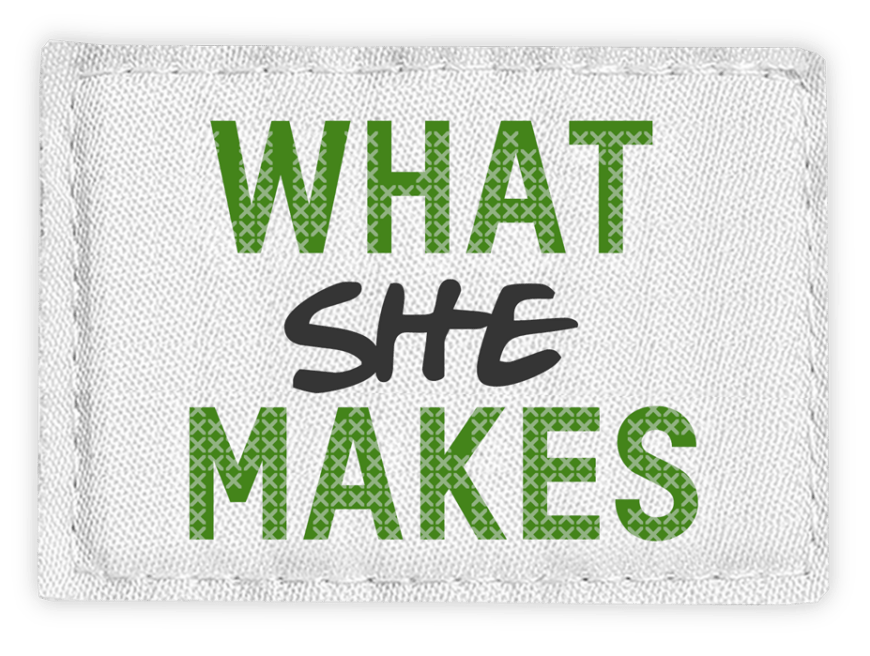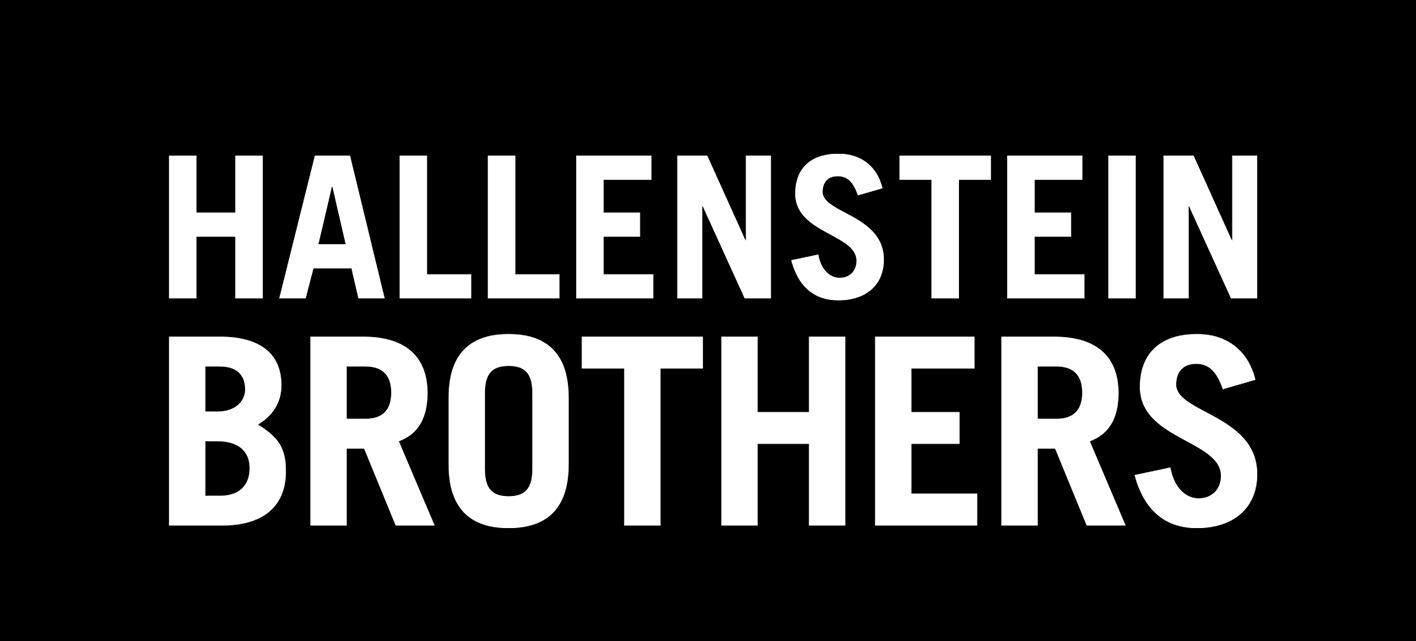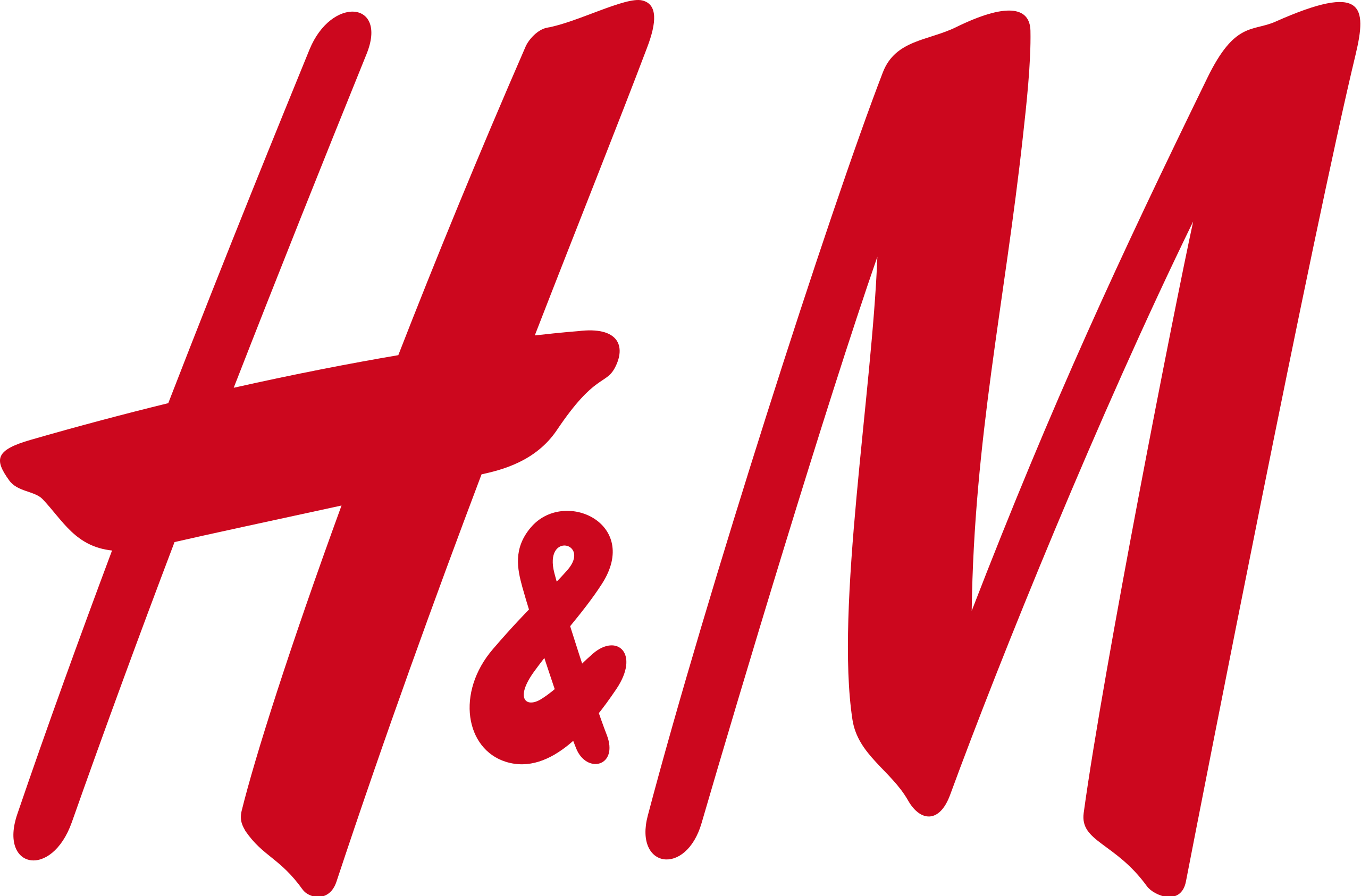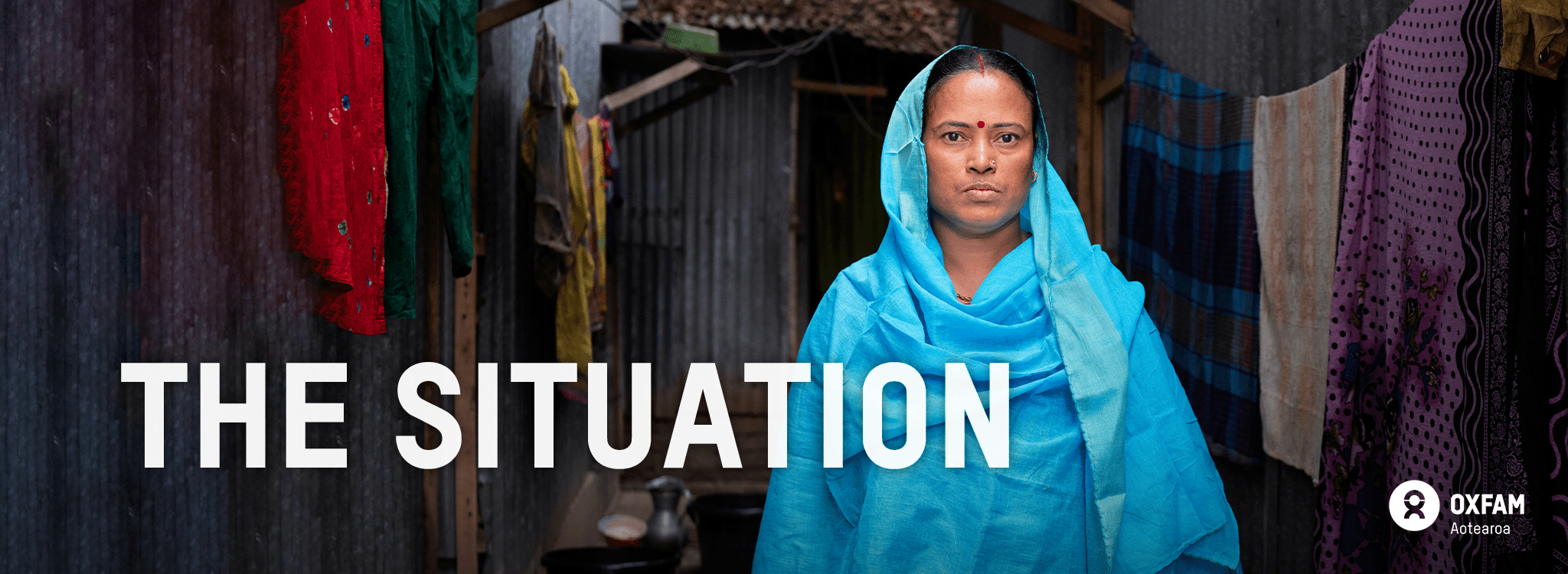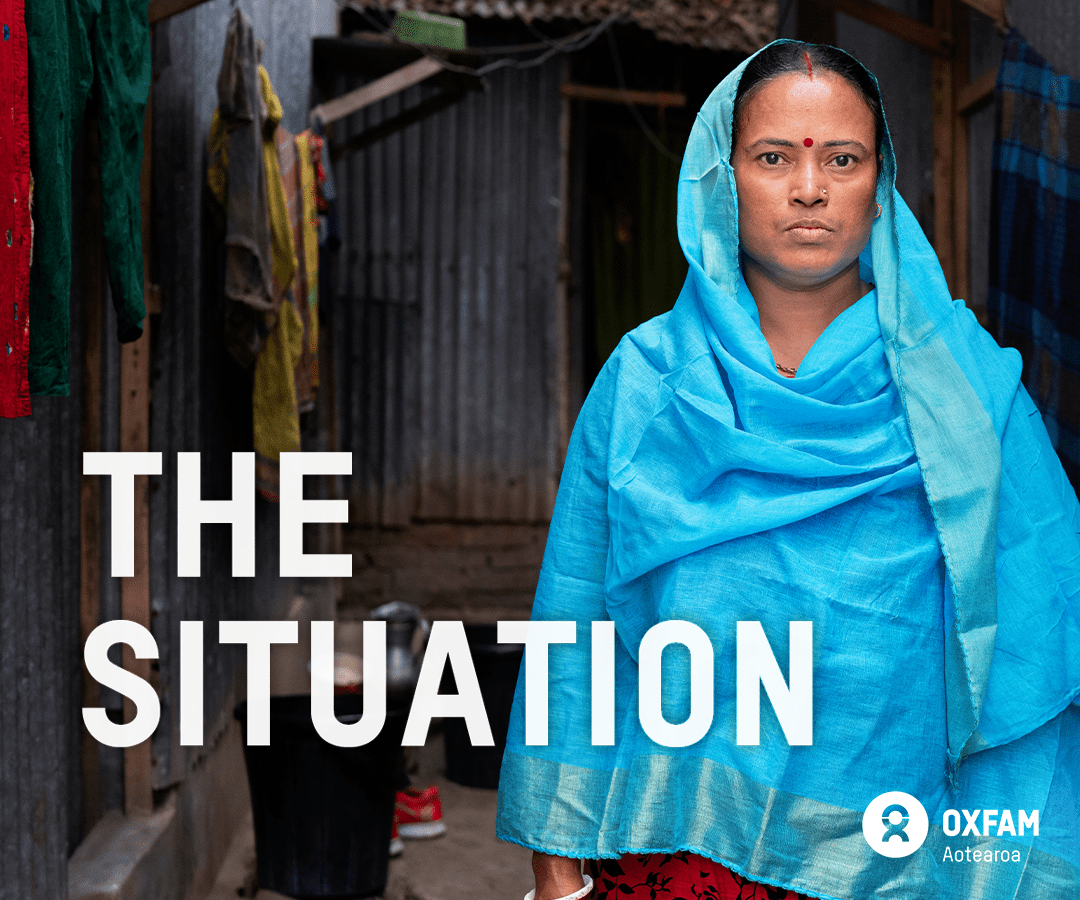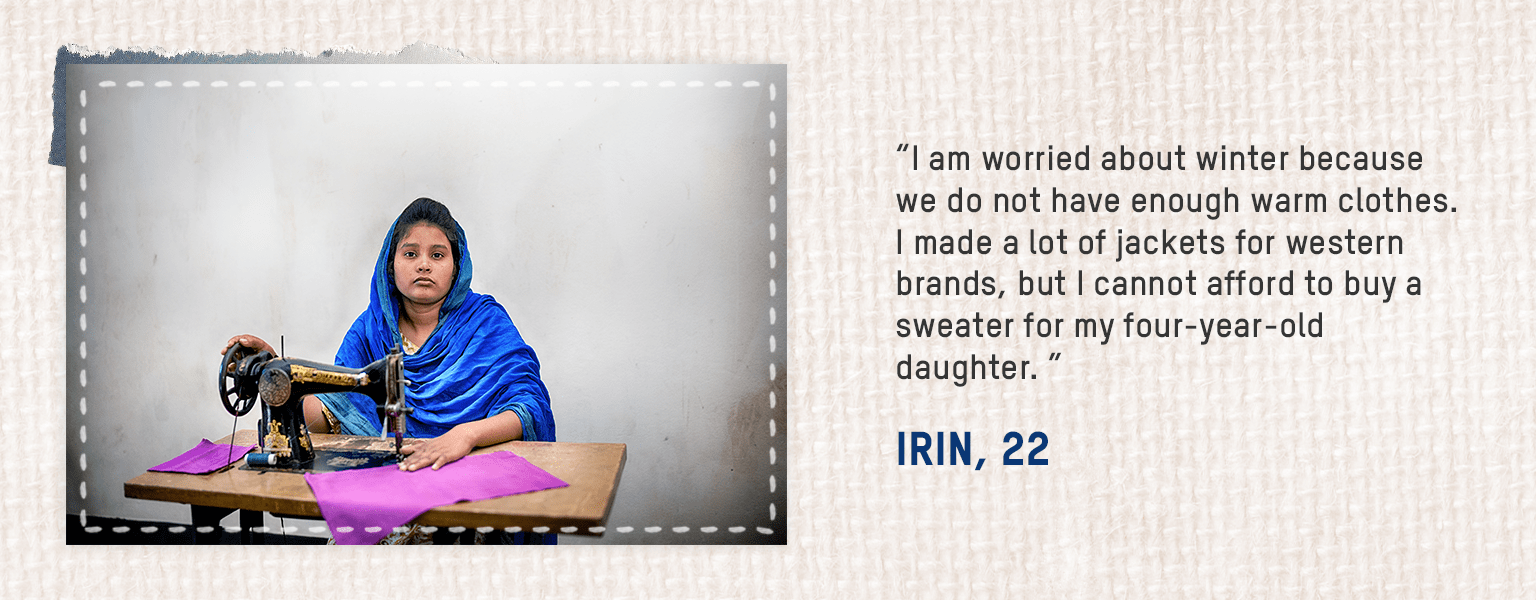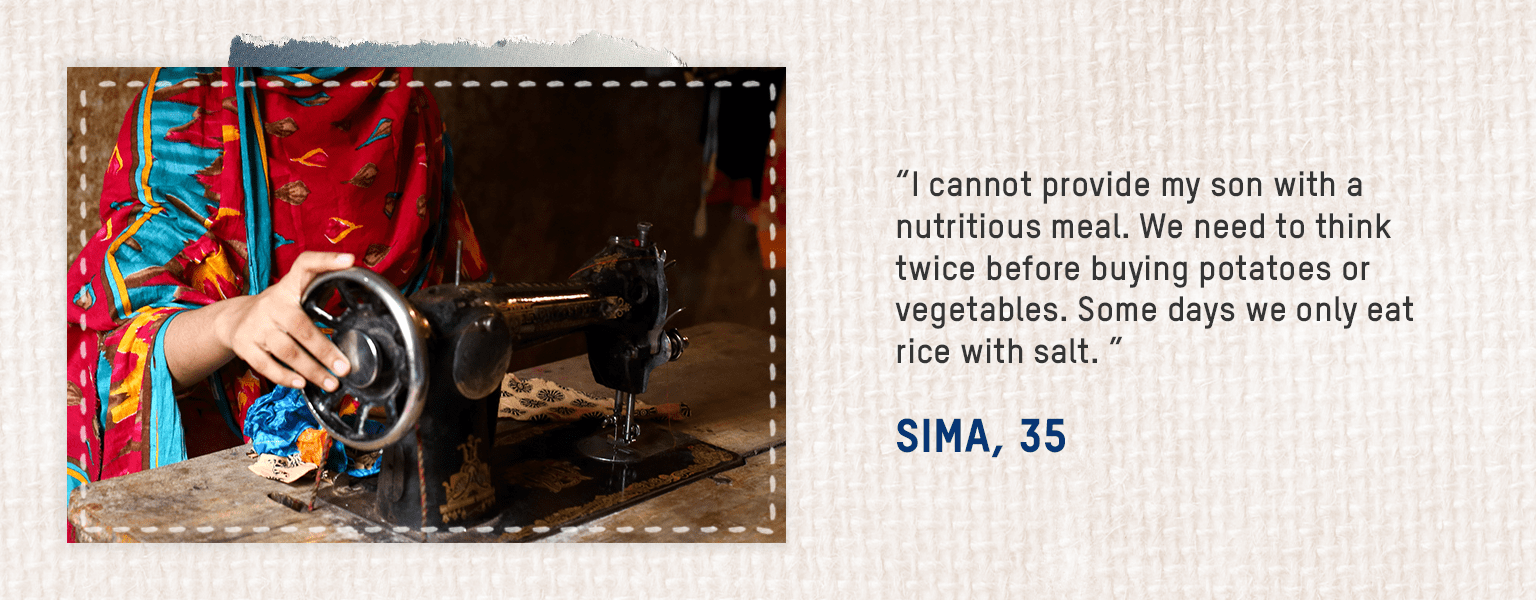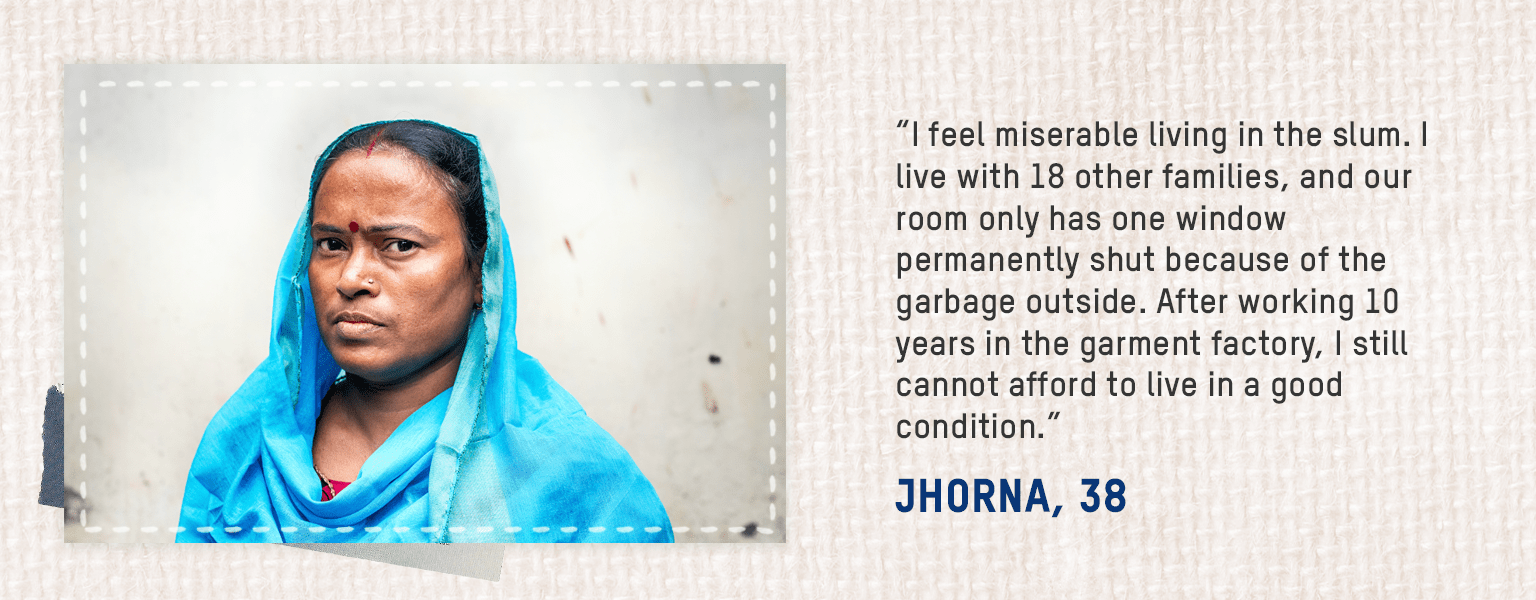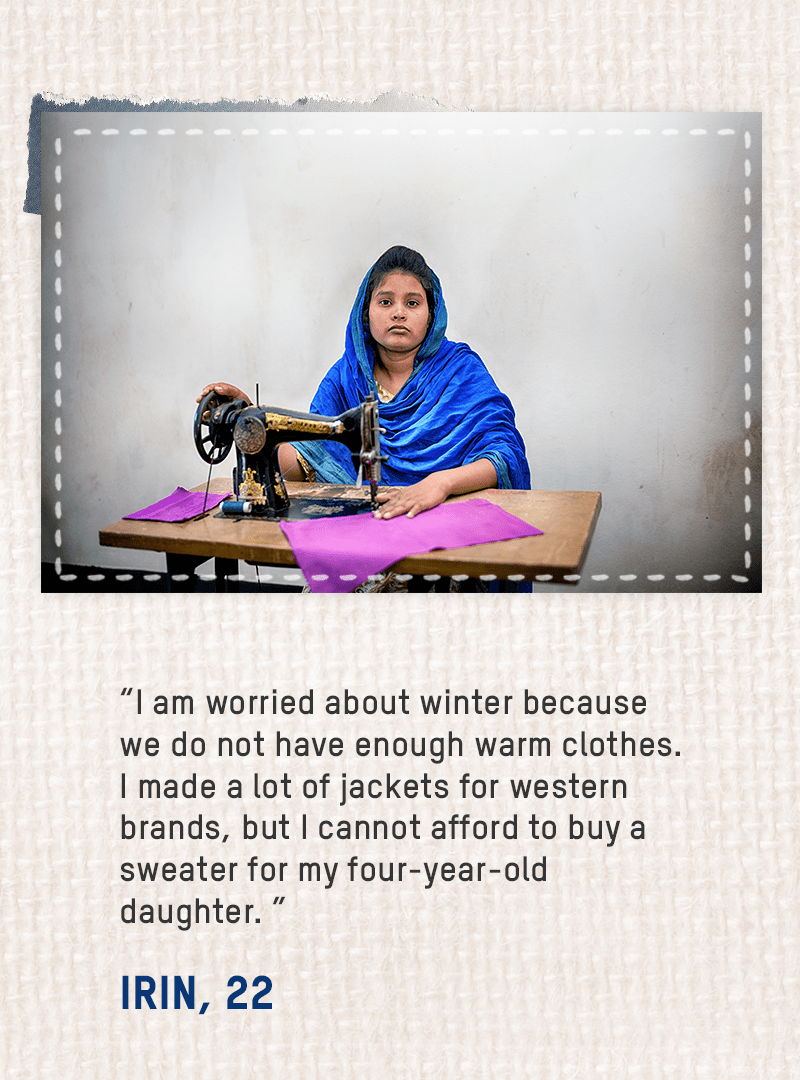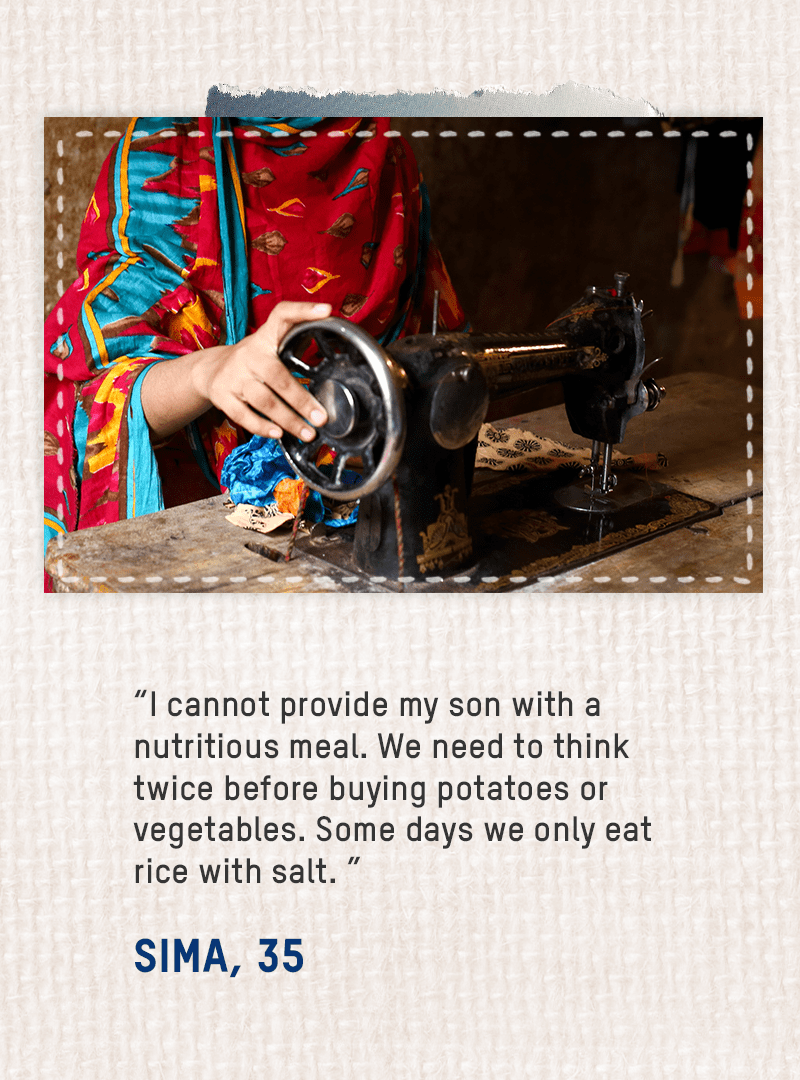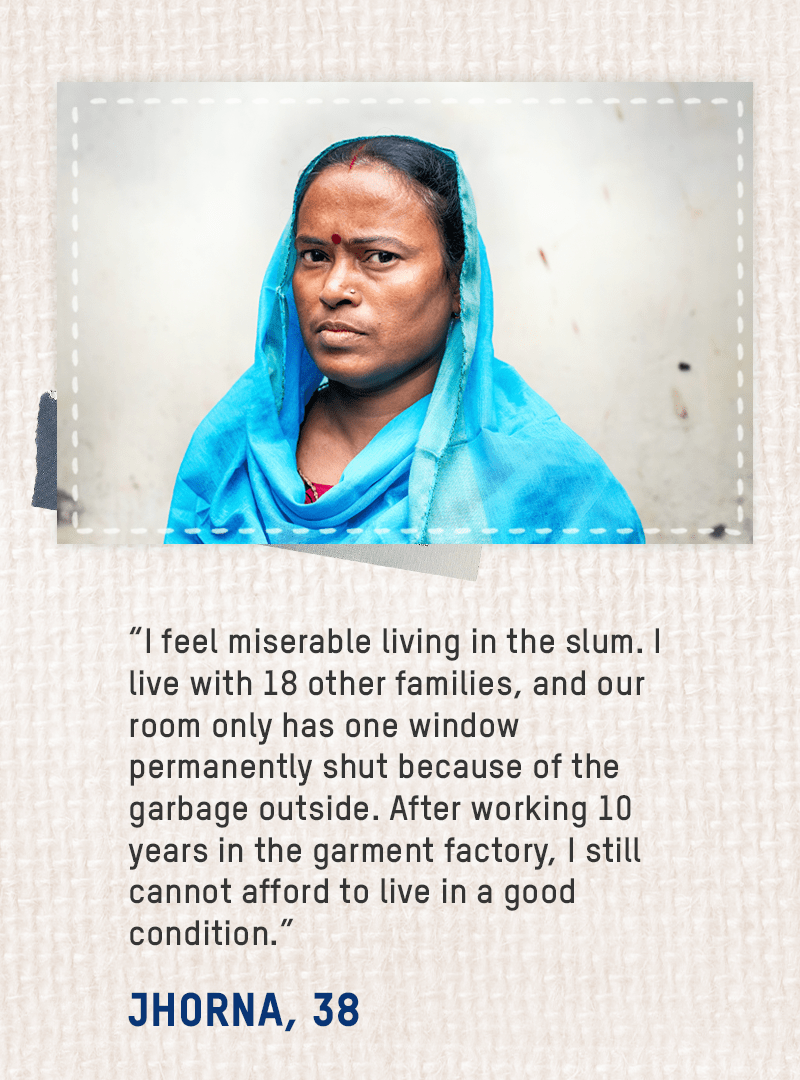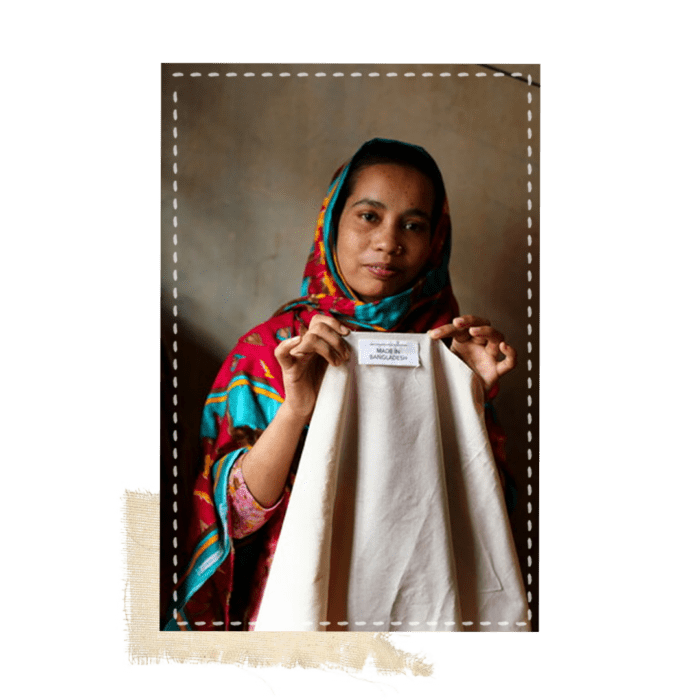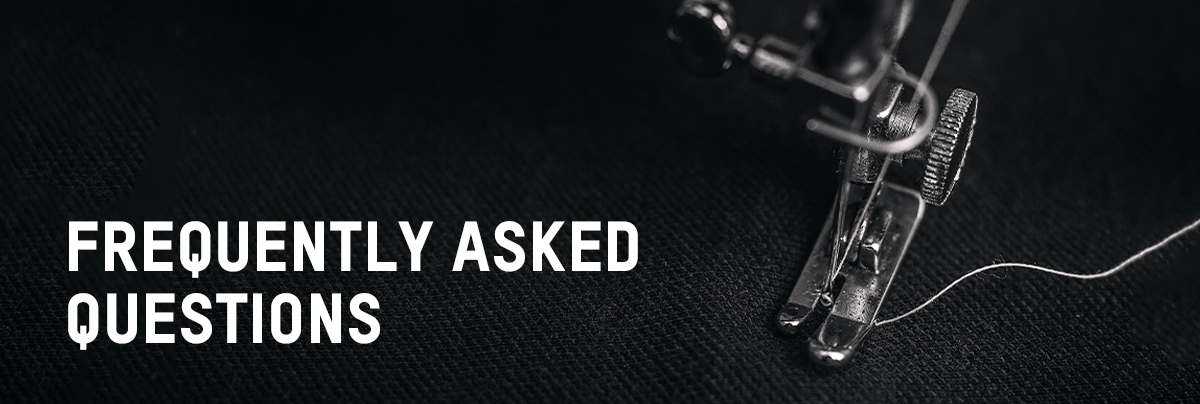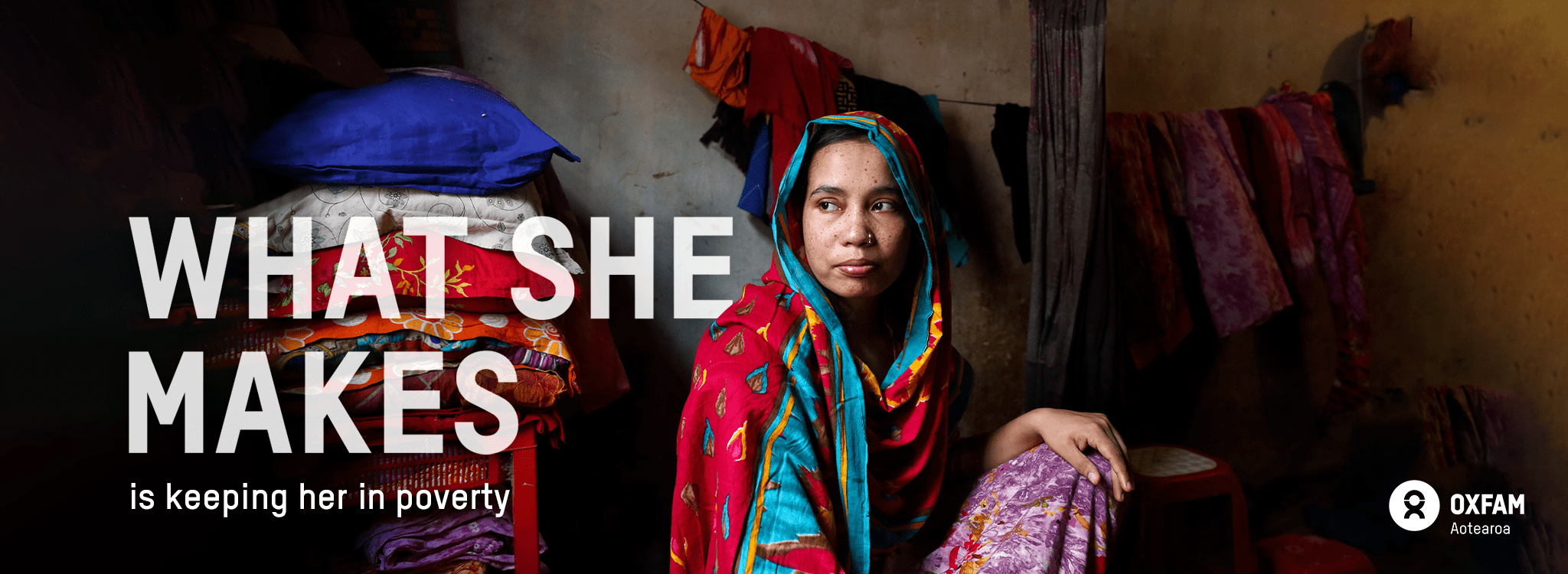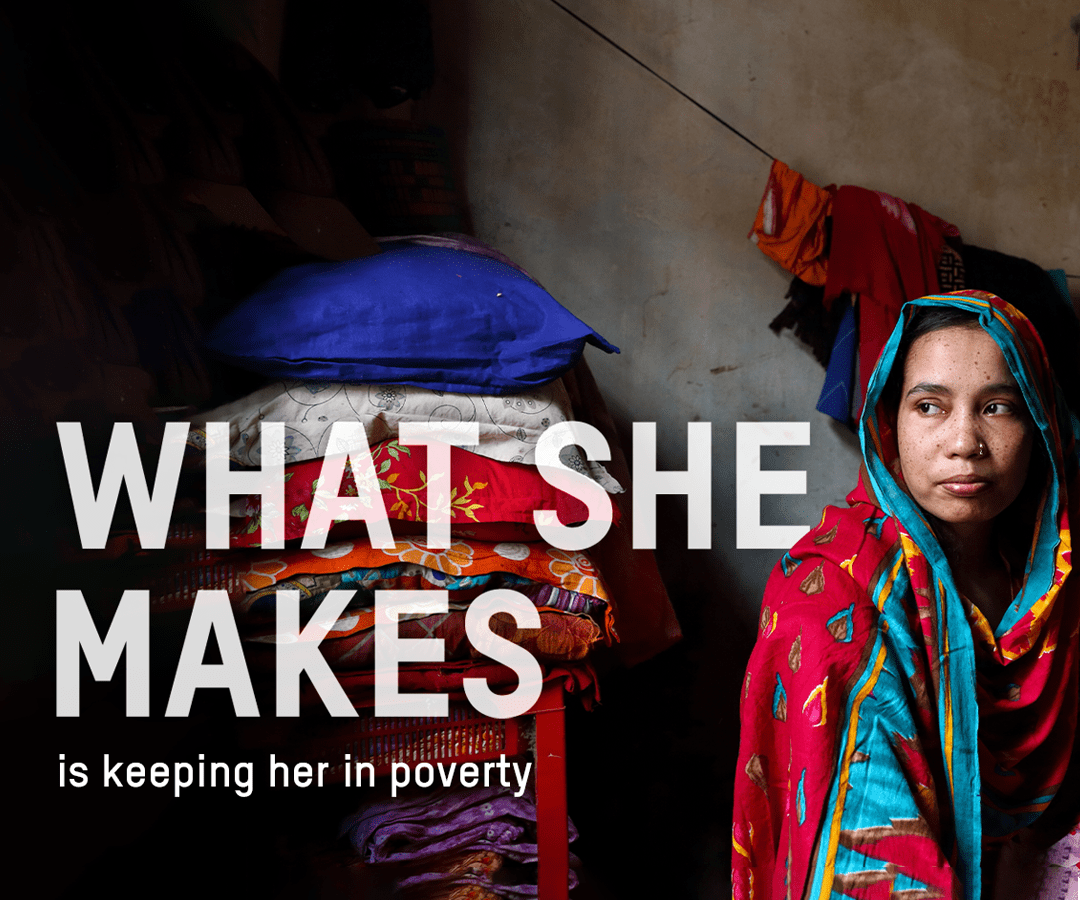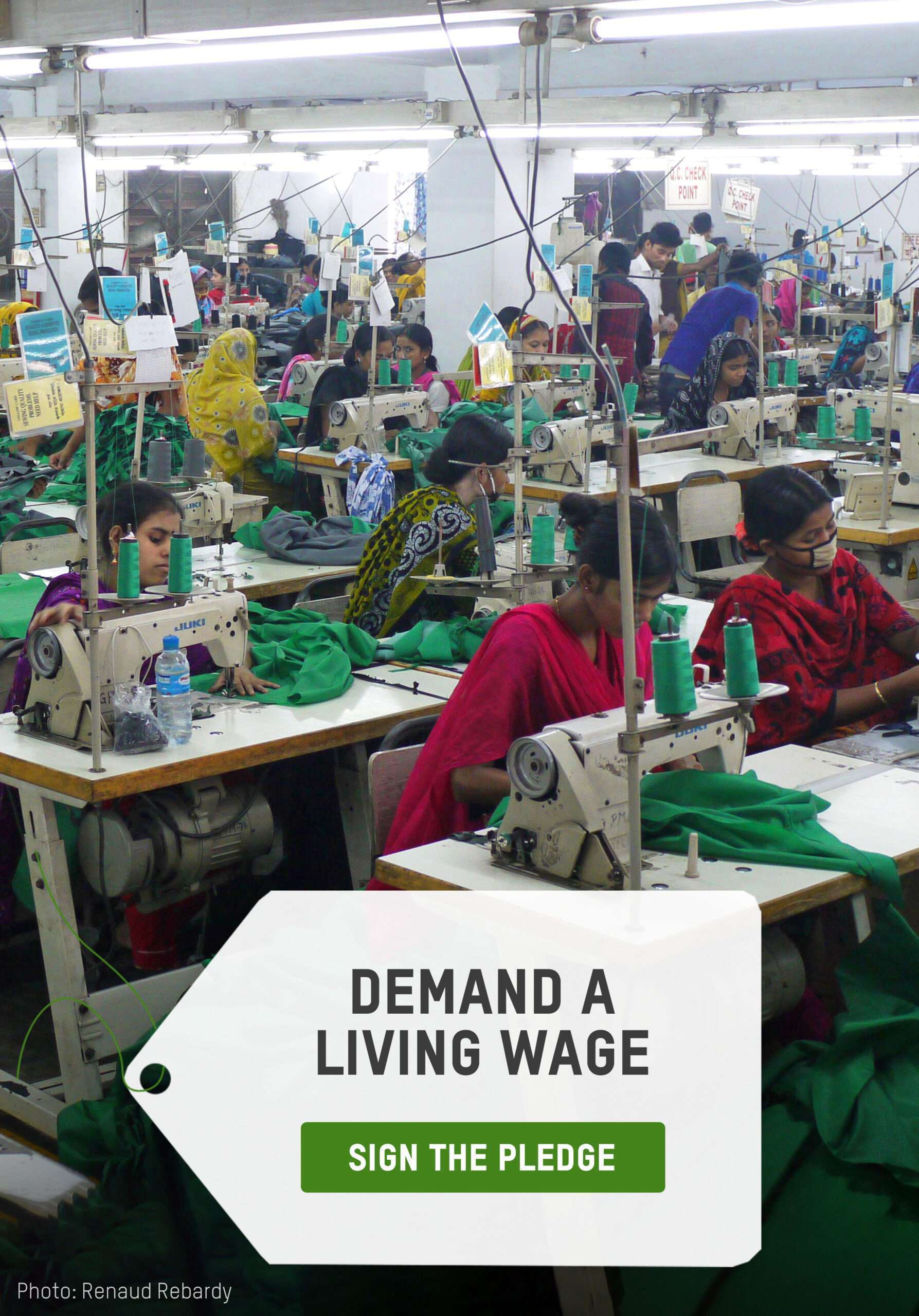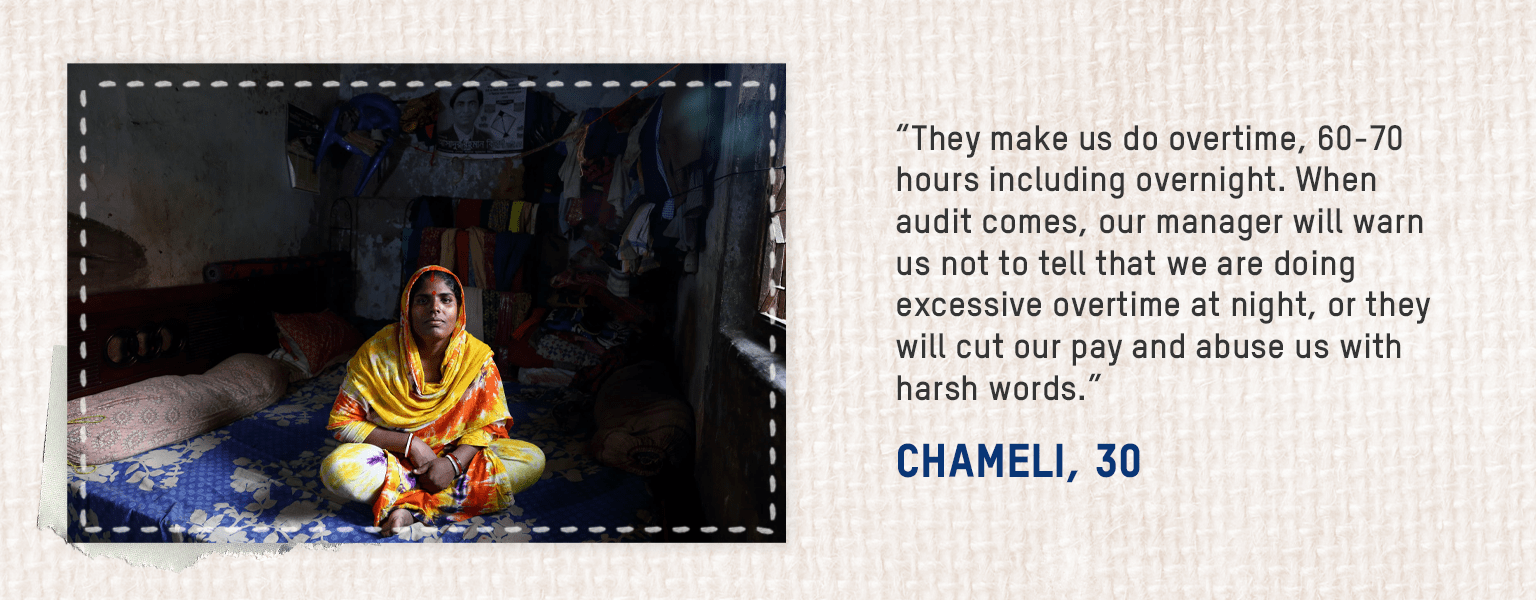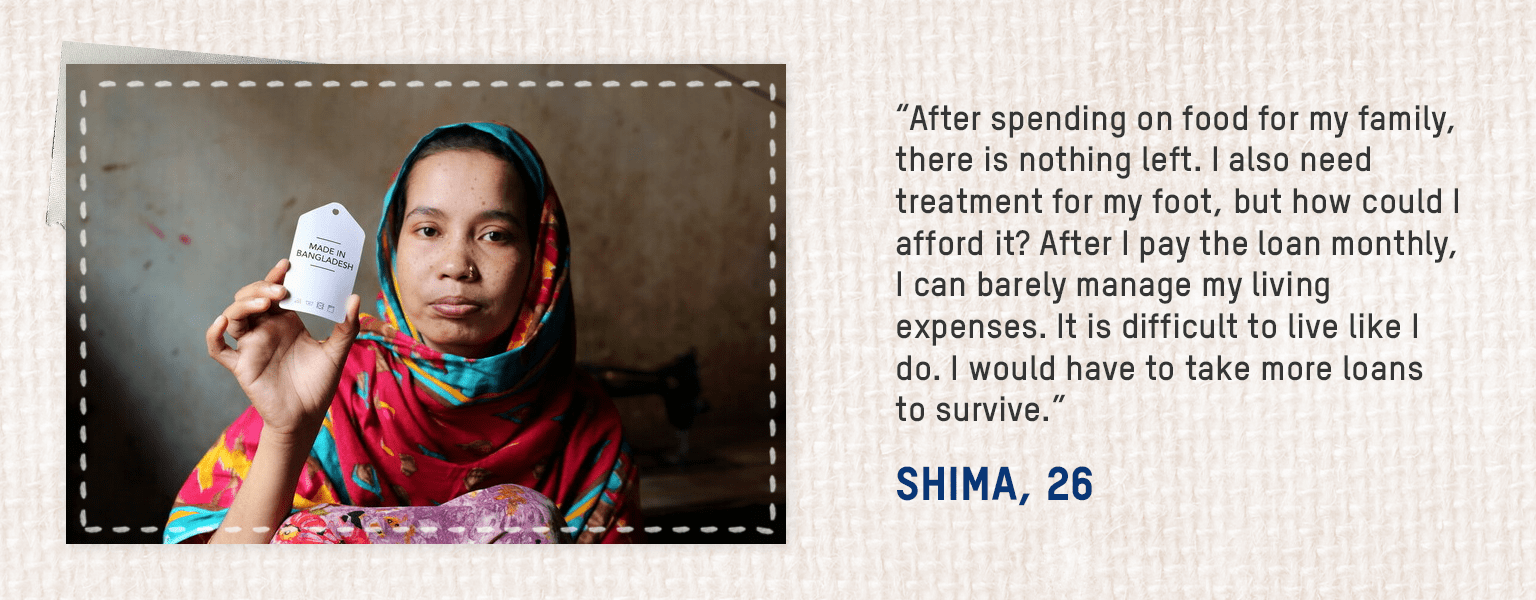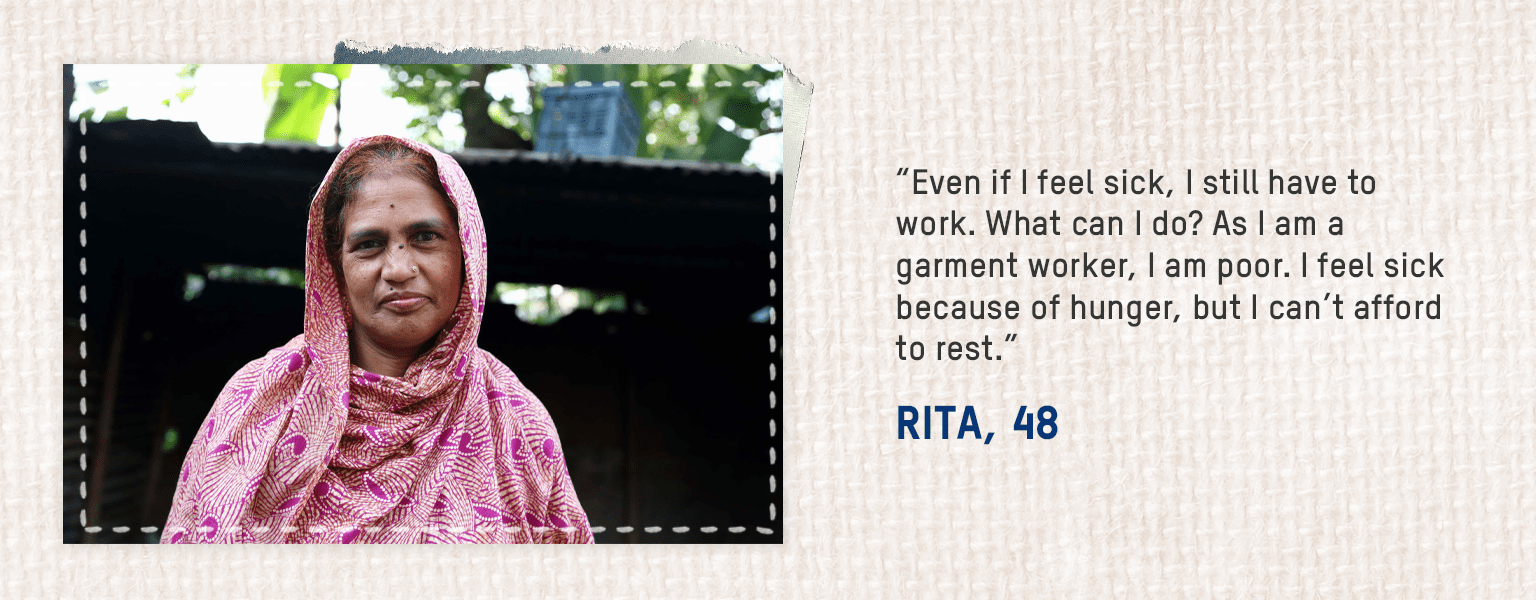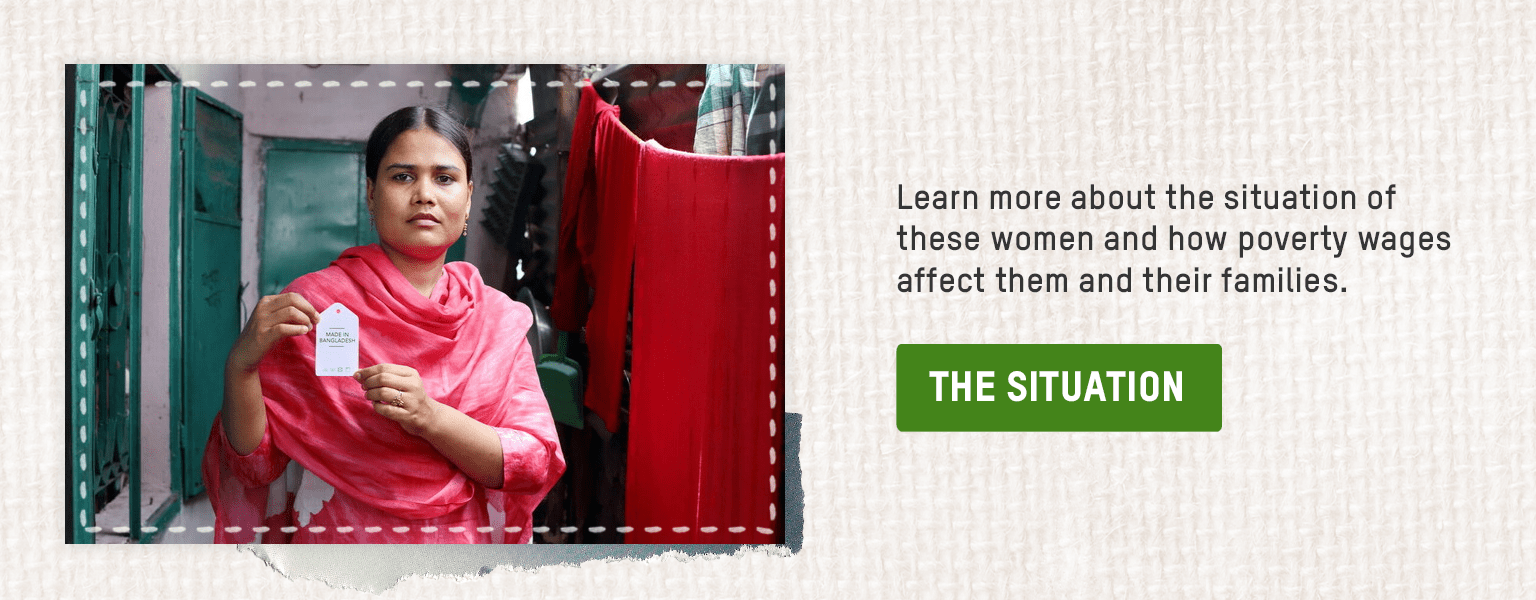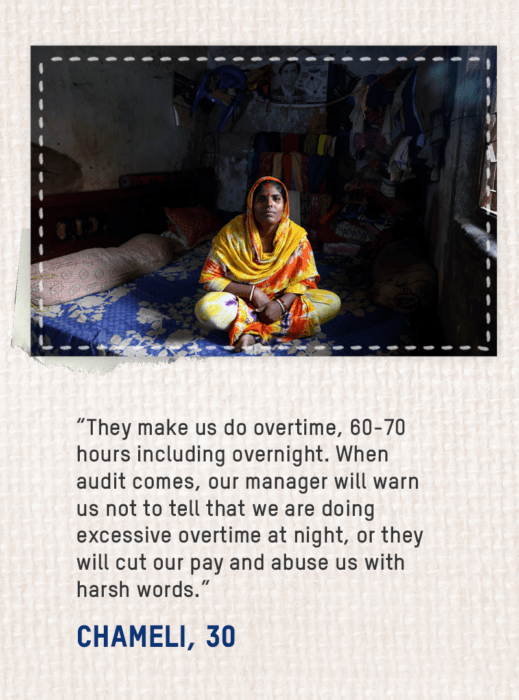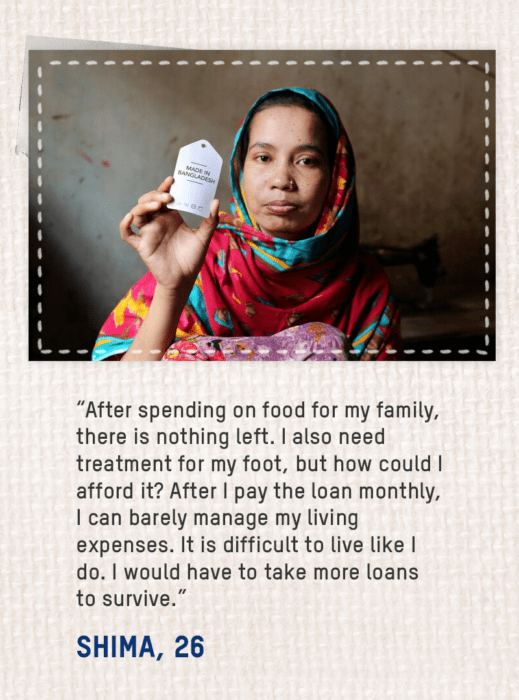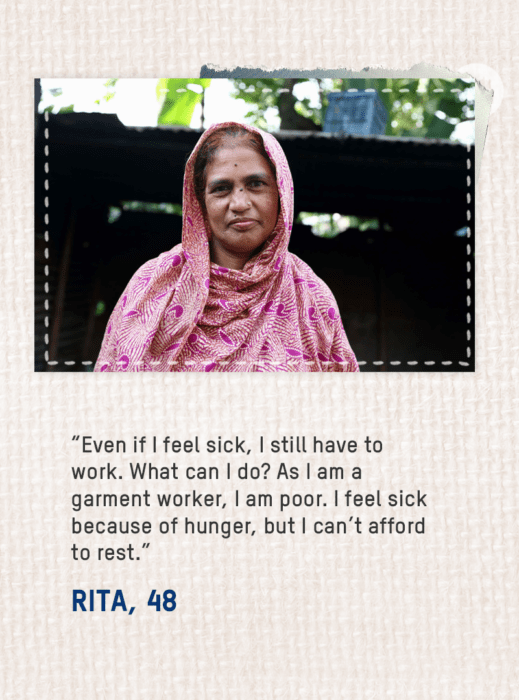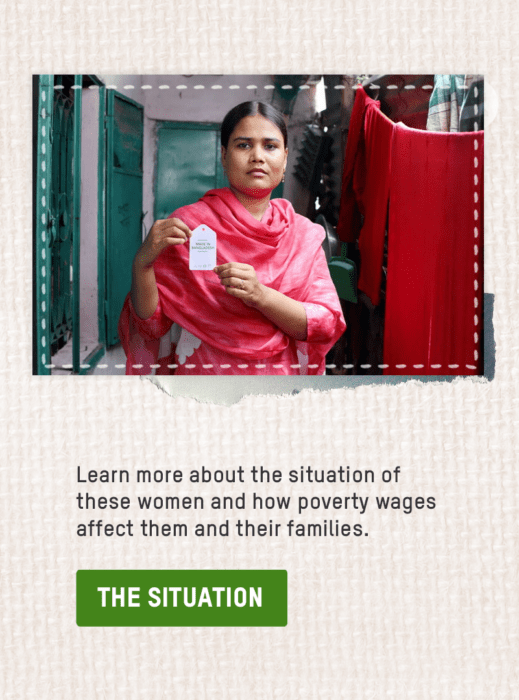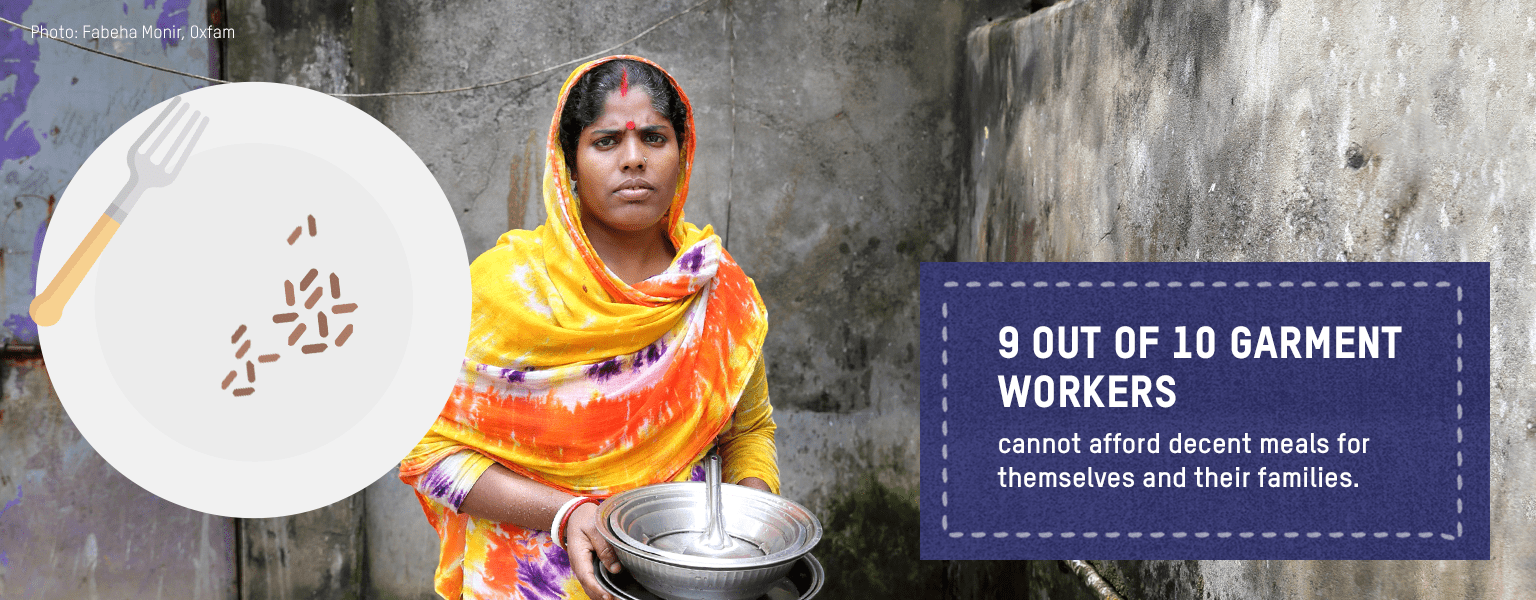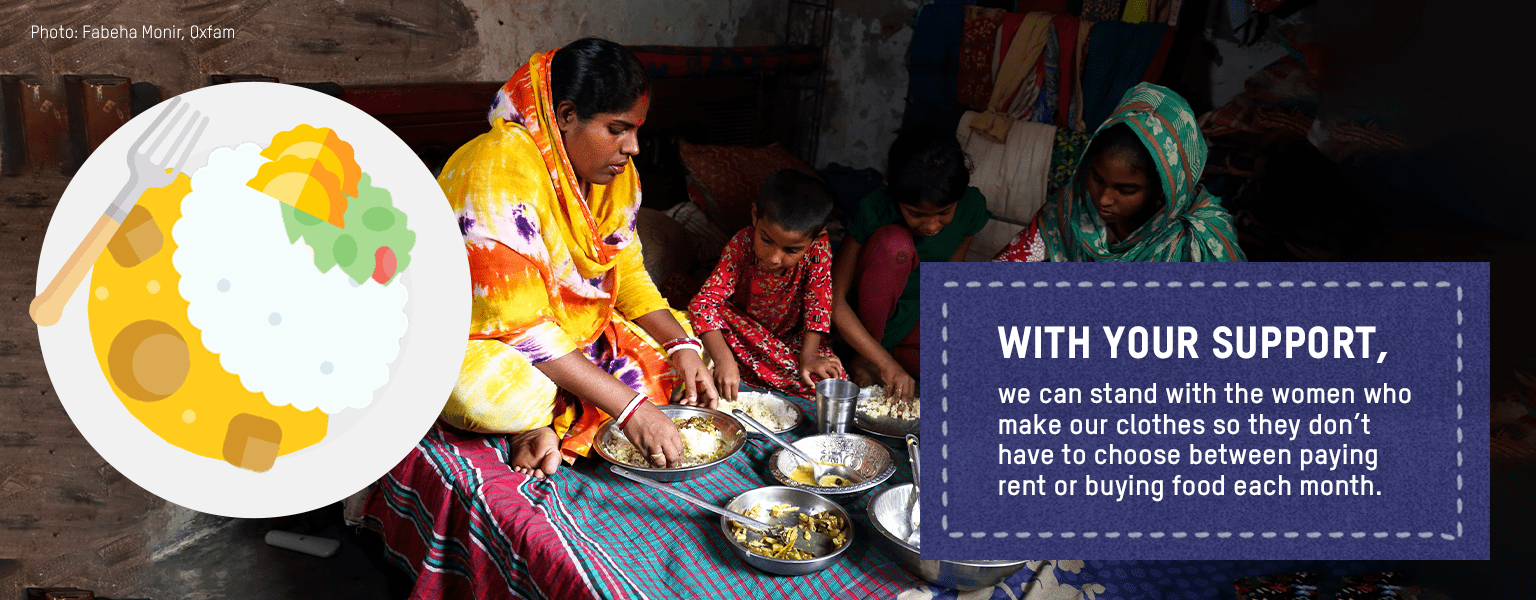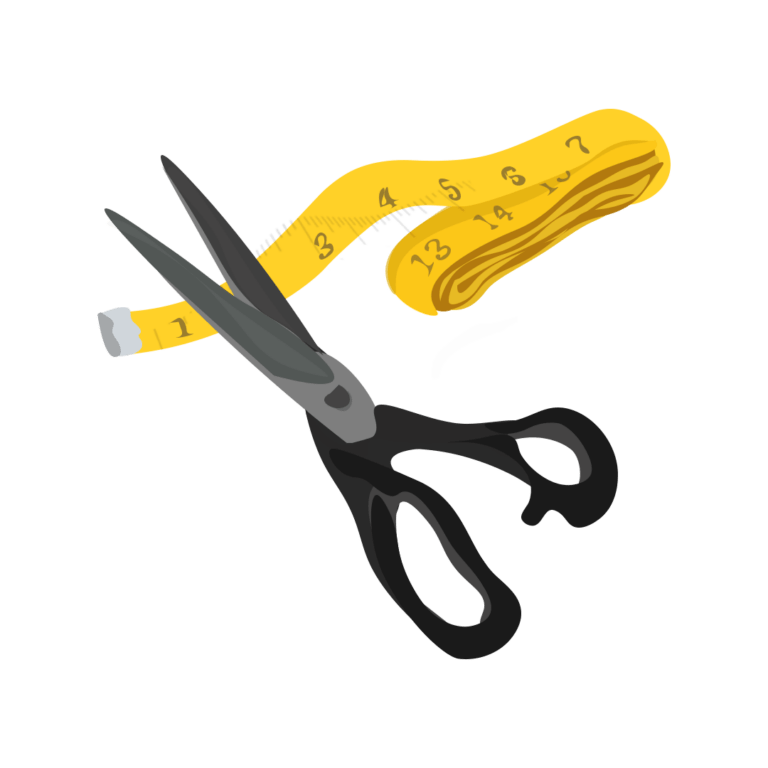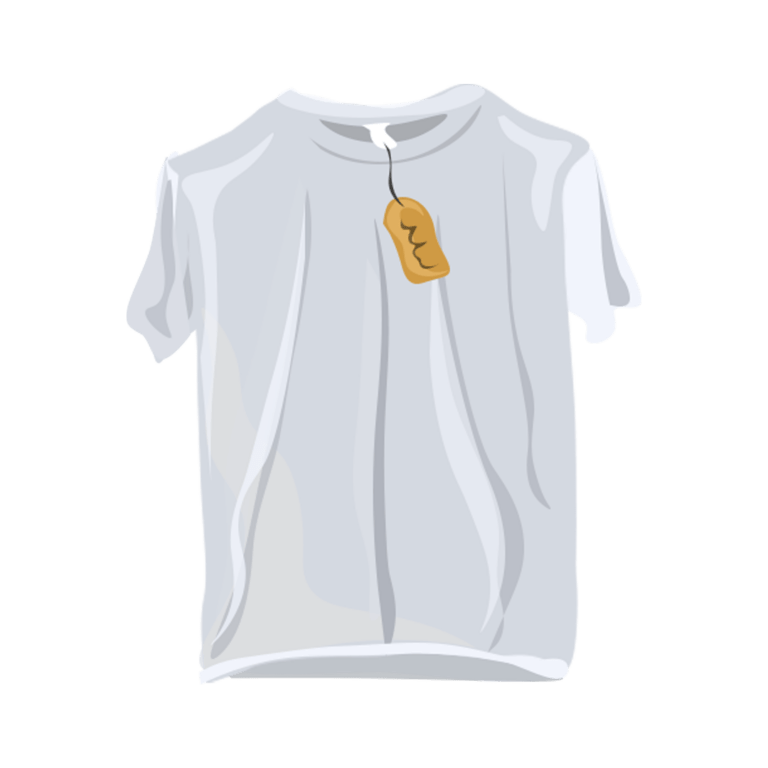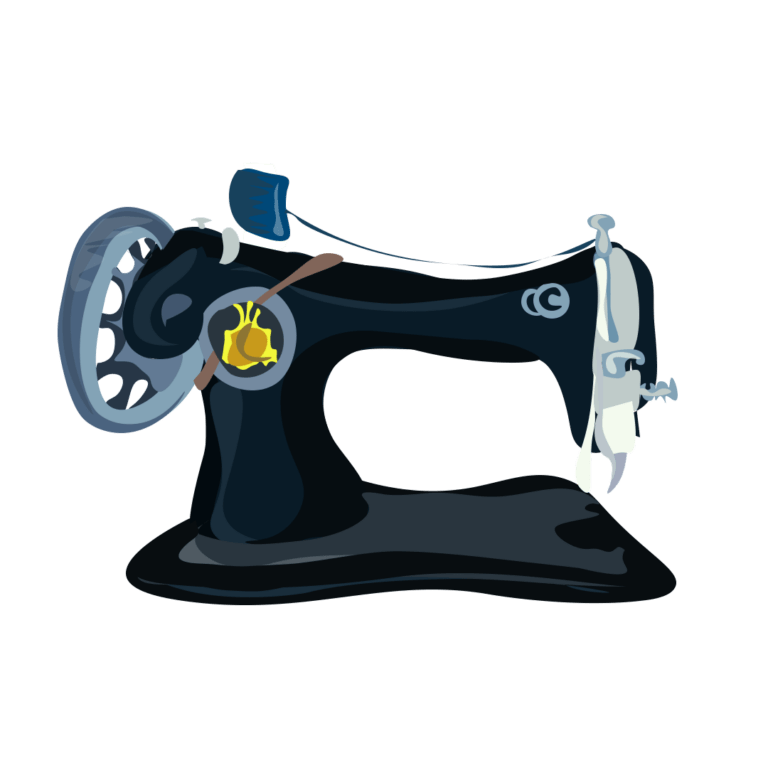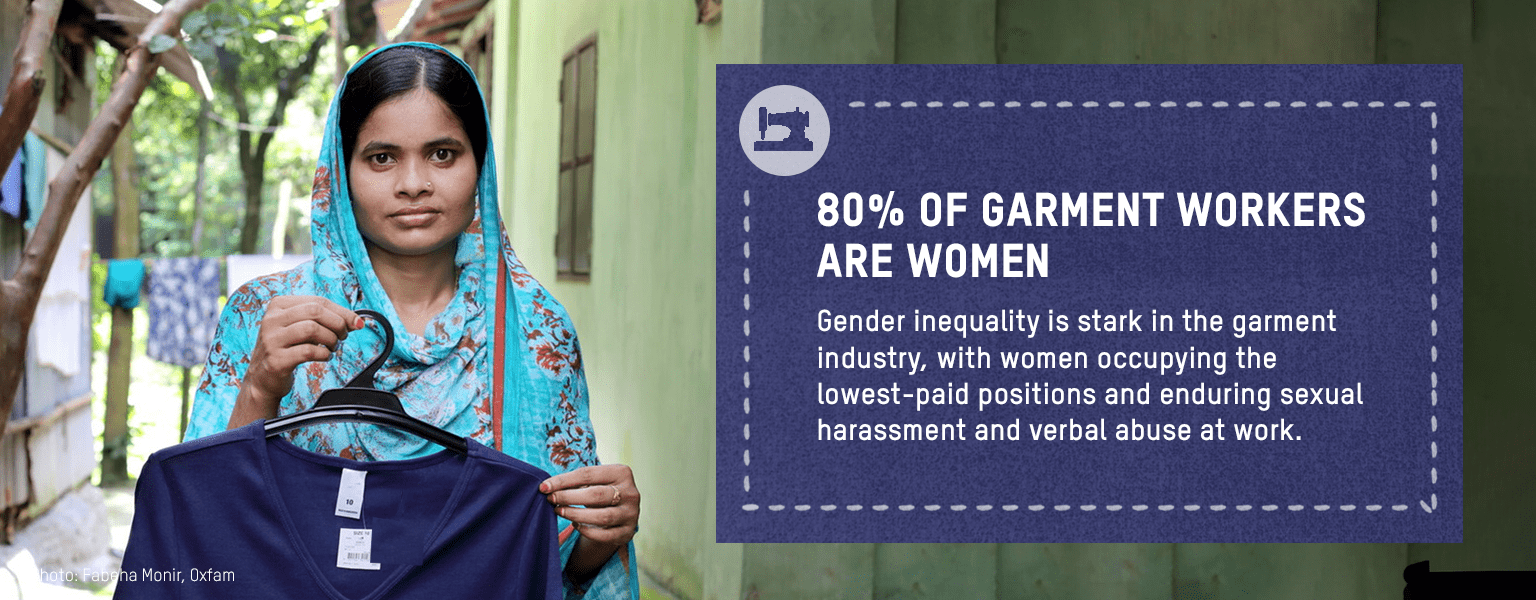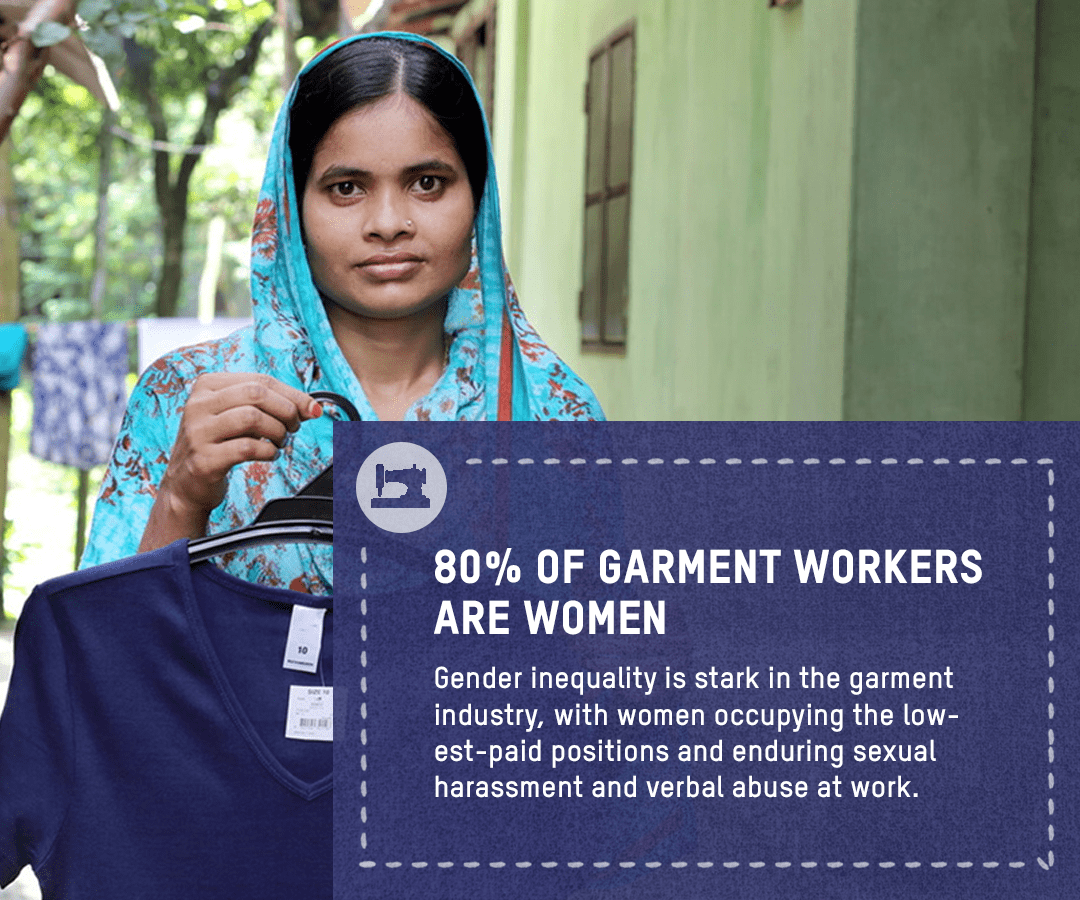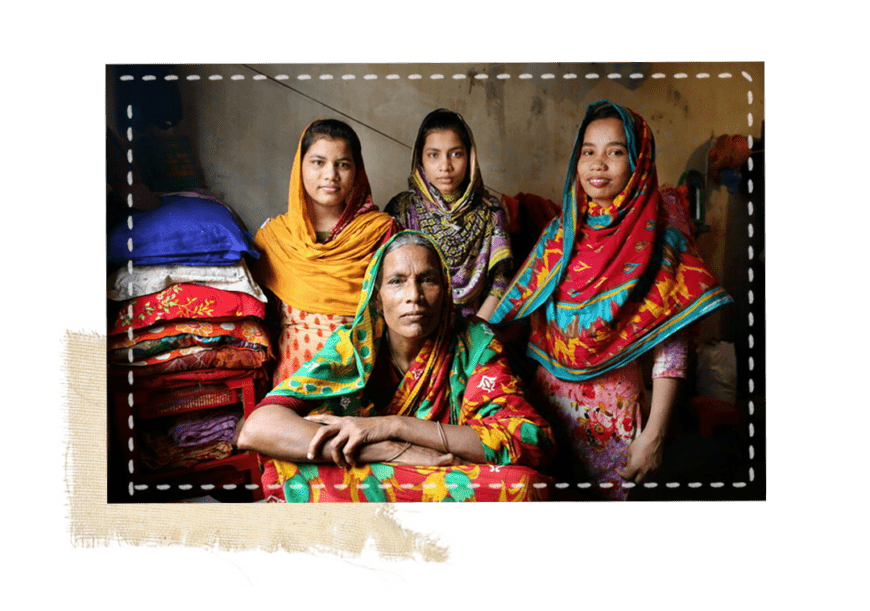IT IS POSSIBLE TO PAY THE WOMEN WHO MAKE OUR CLOTHES ENOUGH MONEY TO LIVE WITH DIGNITY
There are no valid reasons why brands shouldn’t do everything they can to ensure that living wages are paid to the women in their supply chains. The women make the clothes, the brands make millions of dollars, but the women continue to live in poverty. This isn’t right.
The What She Makes campaign is tracking the actions taken by the most popular brands being sold in Aotearoa New Zealand. We started with six well-known clothing brands. We want to create a race to the top by celebrating the companies that show leadership in this area and highlighting the gaps where brands need to improve. Each brand’s progress is tracked on their living wage journeys, based on publicly-available information. Explore below to see what some of your favourite brands are doing to create a fairer fashion industry.
We need your voice to make the most impact. Let these brands know you expect more from them.
Oxfam is willing to help brands on each step of their journey because we care about #WhatSheMakes
Brand Tracker |
1
Get the
basics right |
2
Create a
plan |
3
Pay a
living wage |
|||
|---|---|---|---|---|---|---|
BRAND TRACKER
Make a commitment: ⭐⭐⭐⭐⭐
Glassons and Hallenstein Bros have been working towards a higher wage structure through a roadmap that aims to close the gap to a living wage. In their most recent sustainability report, Glassons and Hallenstein Bros have made an explicit comment to support a living wage by working with their suppliers to meet the living wage benchmark. The latest publication of their 2022 Sustainablity Report includes a clear definition of a living wage, milestones and timeframes, as well as a commitment to reporting results annually. These are strong indicators of a credible, public commitment to working towards living wages in the supply chain.
Be transparent: ⭐⭐
Glassons and Hallenstein Bros have not made the full list of their Tier 1 suppliers and other important details about their sourcing factories available publicly. Partial lists of the brands’ suppliers can be accessed online. These lists however do not add up to the number of suppliers indicated on the supplier map on their website, which only shows the number of suppliers the two brands have in each country. The partial lists themselves provide information on the names and addresses of some of the factories, the number of workers, the percentage of women working in each of those factories and even the size of the factories. Whilst this is a good start, regrettably this information is only available for some of the factories from which these two brands source their clothes. These lists also do not include the date on when they were last updated and reviewed. To achieve complete visibility and transparency of their Tier 1 suppliers, key to ensuring ethical supply chains and fair treatment of workers, Glassons and Hallenstein Bros will need to: publish a comprehensive list of their Tier 1 suppliers, include a statement that it is a complete list of their Tier 1 suppliers, and indicate how often the list will be updated and reviewed.
Make a commitment: ⭐⭐⭐⭐⭐
Glassons and Hallenstein Bros have been working towards a higher wage structure through a roadmap that aims to close the gap to a living wage. In their most recent sustainability report, Glassons and Hallenstein Bros have made an explicit comment to support a living wage by working with their suppliers to meet the living wage benchmark. The latest publication of their 2022 Sustainablity Report includes a clear definition of a living wage, milestones and timeframes, as well as a commitment to reporting results annually. These are strong indicators of a credible, public commitment to working towards living wages in the supply chain.
Be transparent: ⭐⭐
Glassons and Hallenstein Bros have not made the full list of their Tier 1 suppliers and other important details about their sourcing factories available publicly. Partial lists of the brands’ suppliers can be accessed online. These lists however do not add up to the number of suppliers indicated on the supplier map on their website, which only shows the number of suppliers the two brands have in each country. The partial lists themselves provide information on the names and addresses of some of the factories, the number of workers, the percentage of women working in each of those factories and even the size of the factories. Whilst this is a good start, regrettably this information is only available for some of the factories from which these two brands source their clothes. These lists also do not include the date on when they were last updated and reviewed. To achieve complete visibility and transparency of their Tier 1 suppliers, key to ensuring ethical supply chains and fair treatment of workers, Glassons and Hallenstein Bros will need to: publish a comprehensive list of their Tier 1 suppliers, include a statement that it is a complete list of their Tier 1 suppliers, and indicate how often the list will be updated and reviewed.
Make a commitment: ⭐⭐⭐⭐
Since 2013, when H&M first made its public commitment to pay a living wage, the brand has been actively working on its wage strategy and improving the way they do business with its suppliers. While H&M has not succeeded in paying a living wage yet, their commitment to continue what they have started is evident. Their commitment to a living wage, which includes details on what they have achieved so far and what they are working on next, is outlined clearly on their website, and in their code of ethics and sustainability statements. However, H&M still needs to clearly state how they define a living wage, beyond “meeting the basic needs.” H&M is also a member of the Action, Collaboration, Transformation multi-stakeholder initiative that actively works toward the payment of living wages in their supply chain together with other clothing brands.
Be transparent: ⭐⭐⭐⭐⭐
H&M has excellent transparency about who makes their clothes and has shared details of both their Tier1 and Tier 2 suppliers. They review and update their supplier list every month, and provides all of the key details such as factory names, locations, parent company, number of workers and share of women employed in factories, and even the status of worker representation. H&M have also noted that their transparency is aligned with the requirements of the Transparency Pledge, which sets the international minimum standard for supply chain disclosure. H&M’s commitment and practice of disclosing full supplier transparency are commendable and show the other brands that this is possible. Way to go, H&M!
Make a commitment: ⭐⭐ 1/2
Kathmandu has provided a definition of a living wage on its website, but it does not include crucial elements of a living wage, like being able to afford a decent standard of living and provision for unexpected events. They have also acknowledged that a regular work week shall not exceed 48 hours in its Code of Conduct. While they have not explicitly committed to working towards a living wage, their membership with the Fair Labour Association (FLA), shows Kathmandu’s willingness to advance living wages in the supply chain. Kathmandu’s approach to living wages follows recommendations from the FLA workplace code of conduct. They require suppliers to progressively realise a level of compensation that meets workers’ basic needs if current wages are insufficient. This is a start. To make their commitment credible, Kathmandu needs to specify a timeframe and milestones on how these will be achieved, and show how they will transparently report on progress.
Be transparent: ⭐⭐⭐⭐⭐
We found that Kathmandu has excellent transparency of its final stage production suppliers. The supplier list is easily accessible from the website and on Open Supply Hub. It includes the most important details about their sourcing factories including factory names, locations, parent company, number of workers and even the product types. They have also committed to regularly review and update this list every 6 months. Kathmandu is also working on making available details of their Tier 2 suppliers. Awesome!
Make a commitment: ⭐⭐⭐
lululemon has adopted the Global Living Wage Coalition’s definition of a living wage and stated how the brand sees a living wage, but so far, this has not been reflected in their Vendor Code of Ethics. lululemon also needs to integrate the concept of families in their definition. Also, as part of their ongoing accreditation with the Fair Labour Association (FLA), we acknowledge lululemon’s ongoing work to advance living wages in the supply chain. lululemon’s approach follows recommendations from the FLA workplace code of conduct. According to their 2021 impact report, they aim to be accredited by the FLA by 2024. Their Vendor Code of Ethics requires suppliers to progressively realise a level of compensation that meet workers’ basic needs and some discretionary income if current wages are insufficient to do so. This is good – but lululemon still needs to detail a timeline and milestones, and make an explicit commitment to a living wage.
Be transparent: ⭐⭐⭐⭐⭐
Based on the brand’s latest supplier list (March 2023), we found that lululemon has excellent transparency of the factories they source from. The brand includes the most important details such as factory names, locations and addresses, parent company, number of workers and breakdown by gender, sourcing channel, and the date when their list is reviewed and updated. They update their list every six months, with the latest list reviewed in March and published in April 2023. The list is easily accessible from their website and from Open Supply Hub. We also note that there is a statement that it is a complete list of the brand’s tier-one suppliers, and includes 75% of tier-two suppliers. We laud Lululemon’s efforts in having full transparency to the factories they source from, as this is one of the crucial foundations of ethical supply chains and fair treatment of workers. Great work!
Make a commitment: ⭐⭐⭐⭐⭐
Macpac has provided a strong and credible commitment to a living wage. Macpac has indicated all the required elements of a living wage, including a clear definition of what a living wage is that is enough for the workers and their families to live with dignity, earned in a standard work week of no more than 48 hours. Macpac also includes measurable milestones with a timeframe. They have committed to publicly report on the progress of their living wage journey. It is a compelling commitment from Macpac to the wellbeing of the people who make their clothes and that of their families.
Be transparent: ⭐⭐⭐⭐⭐
Macpac has excellent transparency of its Tier 1 trade partners. The supplier list is easily accessible on their website. It includes the most important details such as factory names, locations and addresses, and the number of workers. Macpac has also provided information on the percentage of women making clothes in each of their factories. Macpac has been transparent in classifying the nature of the contract each of the suppliers has with Macpac and has committed to reviewing and updating information on their Tier 1 trade partners list on a six-monthly basis. Bravo Macpac!
Click the ‘demand action’ megaphone icon to tell each brand what you think about their commitment! When we join together and make our voices heard, we show these major brands we want the women who make our clothes to be paid enough to afford a basic and dignified standard of living.
Oxfam Aotearoa will release each brand’s status for Be transparent in 2023, for Step 2 in 2024, and Step 3 in 2025/2026.
How we track their journey
We will give brands a star rating based on a 5-star scale. The number of stars a brand will get will depend on how the elements of the brand’s milestones meet Oxfam’s requirements. We also include an explanation under each brand to give context behind the rating.
How we measure progress
We need brands to signify their intention to change the lives of the women who make their clothes and make a public, credible commitment. A credible commitment to a living wage should include a clear definition of what a living wage is, measurable and verifiable milestones, and a timeline. By not committing to a living wage, brands allow poverty wages to be paid to the women who make our clothes.
Brands need to publish where they source their clothes from and to know where they need the changes to happen. If brands are not transparent about their sourcing, there is no way for us to know if human rights are being violated. They need to disclose their suppliers, including factory names and addresses, parent companies, number of workers and breakdown by gender, and types of products made, so we know where our clothes are being made.
We ask brands to separate labour costs in price negotiations. This way, it will be easier to identify if the wages being paid to the women who make our clothes correspond to a living wage or not. It also allows for a price negotiation that does not affect workers’ wages.
Within 12 months of making a commitment, brands should publish a plan on how they will pay a living wage. This plan should include a step-by-step strategy with measurable milestones and a timeframe. We also encourage brands to develop it in consultation with workers’ representatives, factory management and other stakeholders.
Now we get to the best part. If the brands have diligently followed the journey, paying a living wage is the logical next step. We expect brands to pay a living wage within four to six years from making a commitment.
Engaging with the brands
We’ve reached out to these brands and asked them to join us on a journey to a living wage. We provide them with technical guidance and knowledge and support them in addressing different challenges in paying a living wage to their supply chain. We have developed a Brand Guide and have communicated what the campaign expects from them. We will continue to demand action from brands and support them to succeed in paying a living wage to the women who make our clothes.
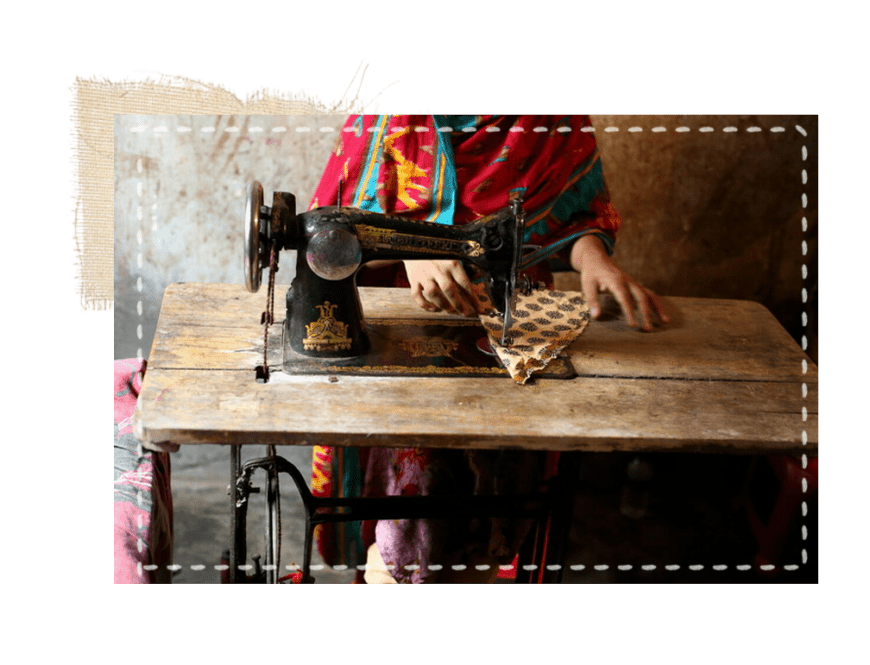

Oxfam Aotearoa does not endorse nor have any affiliation with the companies that are featured in this campaign. Oxfam Aotearoa acknowledges that the copyright in the logos is the property of these companies.





